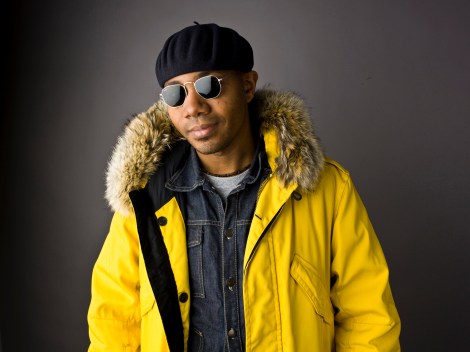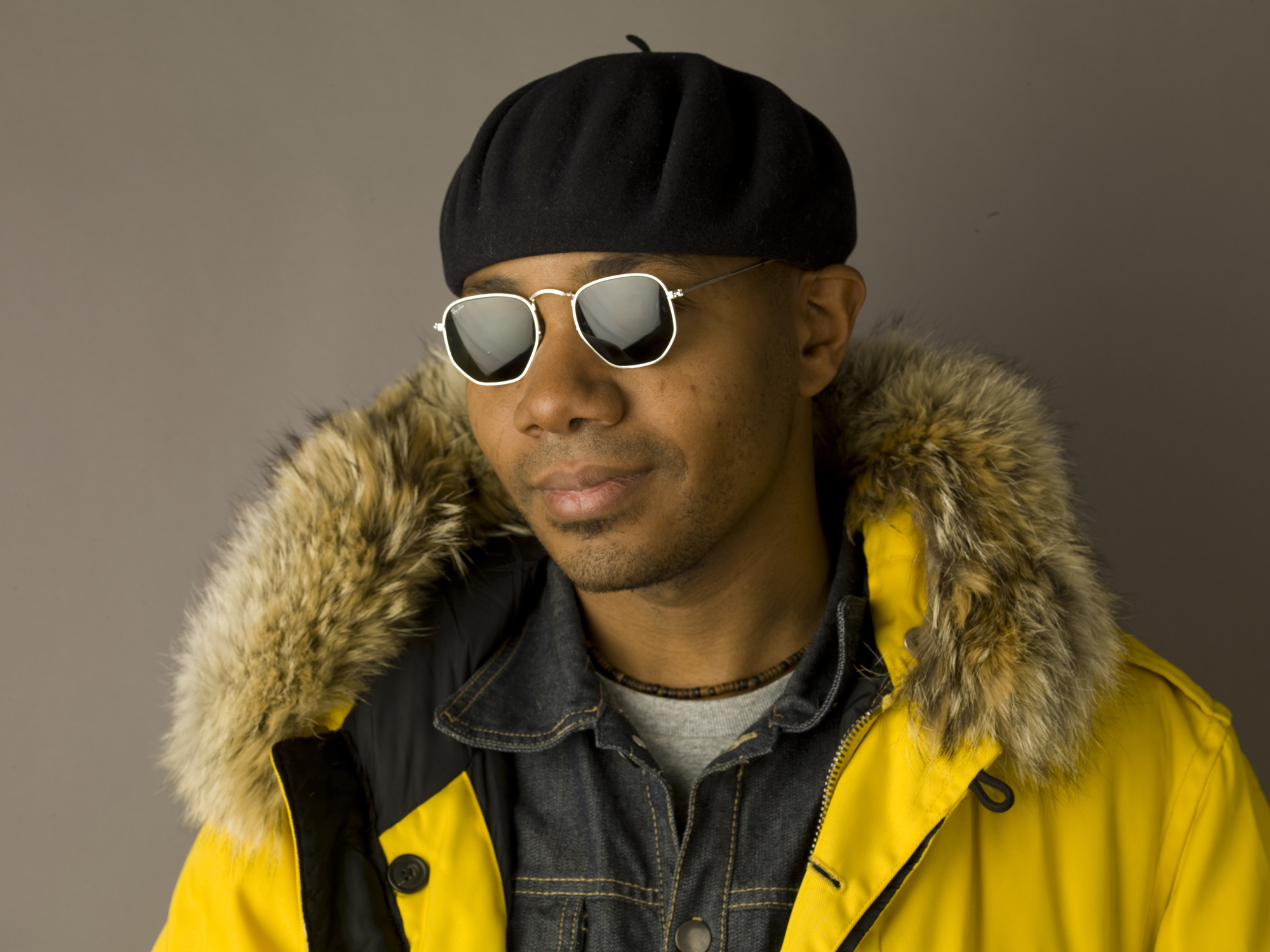
Mike Figgis
Al Gore had An Inconvenient Truth. DJ Spooky is taking a different approach.
Spooky, whose real name is Paul Miller, is an artist, writer, and musician based in New York. A few years back, moved by the news that the Larsen and Wilkins ice shelves had collapsed, he packed up his camera and recording equipment and headed south. The result is what Miller calls an “acoustic portrait” of the melting ice at the bottom of the globe, and he’s been touring with it, and its graphical companion, The Book of Ice, off and on ever since.
The work, called Terra Nova: Sinfonia Antarctica, has left some scientists scratching their heads (see Wynne Parry’s review of his performance at the New York Academy of Sciences), but it has landed Miller some remarkable gigs, including a show on the National Mall on Earth Day in front of a crowd of 200,000 people. It includes sounds of shifting ice he recorded during his visit, and a “sonification” of the molecular structure of ice — and it’s all spliced and reconstructed remix-style, filtered through the mind, and turntable, of a DJ. Here’s a taste:
Miller says he is inspired by the narrative concept of in medias res: “It’s a literary and artistic technique where the narrative starts in the middle of the story instead of from its beginning. The characters, setting, and conflict are often introduced through a series of flashbacks or through characters relating past events to each other,” Miller says. “Reverse engineer the concept, and you’re led directly to DJ culture’s fondness of sampling, collage, and above all, ‘the mix.’ That’s the mirror I hold up to this crazy world right now.”
Next, he’s taking that mirror to the Metropolitan Museum of Art, where he was recently named the first-ever artist-in-residence. He will present “Of Water and Ice,” a related piece about the environment, in 2013.
DJ Spooky took a little time recently to talk with us about the relationship between art and science, Clint Eastwood’s performance at the Republican National Convention, and how a city kid like himself became fascinated with the far corners of the Earth (hint: air conditioning).
Q. How did you end up in Antarctica?
A. I am interested in Antarctica because I have a deep interest in environmental issues and human rights. Climate change affects us all, and I wanted to see it firsthand. I guess I turned left in New York off of Broadway, found myself walking in one of the world’s southernmost cities, Ushuaia, and we left from there for a six-week odyssey.
I took a studio and went to several of the main ice fields, and made a batch of graphic design works, and then made a group of music compositions to respond to the same phenomena. I guess when you look at how rapidly the world is changing, you really have to face the fact that the “Anthropocene” era is simply a massive remix of the planet.
Q. One of the criticisms of climate action broadly has been that the focus is on melting ice caps and polar bears — things that are well beyond most people’s reality. But you’ve embraced them — the ice caps, at least. Why not pick a topic that’s closer to home for people who need to hear this?
A. I think that the arts can always reframe the debate. If you look at how much people responded to something as simple as Clint Eastwood having a chat with an empty chair during the Republican convention — it probably will make Romney lose the election. But hey … it was performance art. I’d like that empty chair to transform into the Arctic Circle, and ask these politicians to talk to it. Ditto for the South Pole.
Q. So Romney could crack jokes about climate change and Obama could pretend it wasn’t there?
A. Obama is gridlocked, and he has a lot of work to do when he’s reelected. But basically, I think his heart is in the right place. The Republicans have hammered him for four years, and blocked everything that could have happened.
Q. You’ve baffled some of the more scientific set with your artistic interpretations of the environment.
A. Science and art are a kind of delicate dance of intuition and perception. I like to push that kind of paradox, and Brian Greene wrote the introduction to my most recent book The Book of Ice with this in mind. He’s a major physicist, and the idea that you’d have someone like that engage with DJ culture is really a good thing. We need more scientists to break the mold, and see what happens. I like to push the envelope on that kind of thing.
Q. What message do you want people to walk away from Terra Nova with?
A. Climate change — folks, it’s really, really, really real.
Q. Do you ever worry that you’re just taking inscrutable data and turning it into inscrutable music?
A. It speaks to many people, so no, it’s not inscrutable. It’s inevitable.
Q. What has the reaction been as you’ve presented Terra Nova around the world?
A. Some people really like it, some don’t. I’m cool with that.
One of my favorite composers, Debussy, once wrote: “There is nothing more musical than a sunset.” He advised young composers to “listen to the wind,” and he even found the piping of a shepherd to have more complex harmonies than any musical text. What happens if we think of music while facing the haunting ice and landscapes of Antarctica?
I like to call the Antarctica project a kind of “acoustic portrait.” I wanted to make a statement about climate change from the view point of DJ culture and graphic design.
Q. What other artists are doing interesting work on the climate issue right now?
A. I’m a big fan of Solar One — they have cool DJ sound systems! There’s also Moby, who has been really active in human rights. And last but not least Sean Lennon and Yoko Ono have been really active against fracking, so hopefully this will all pick up more. And there’s a great art collective out of the UK called Cape Farewell. Lots going on!
Q. You grew up in Washington, D.C. Any thoughts on making this issue relevant to kids who only see ice caps and polar bears in books or on computer screens?
A. When I was a kid, I went to museums.
Q. Is that where it started for you — your concern for the environment — at the Natural History Museum?
A. When I was a kid — even though you were in a city as complicated as D.C., with its political intrigue, high murder rate, and crazy political climate — all that was overlaid by the intense summer heat and the way you felt it when the heat would move in over the land. If you’ve ever been in a D.C. summer you can get the idea pretty quick. And humorously enough, museums were often the only cool place in the summer. If you’re a kid, it’s a big incentive to go into libraries, museums — whatever it takes.



